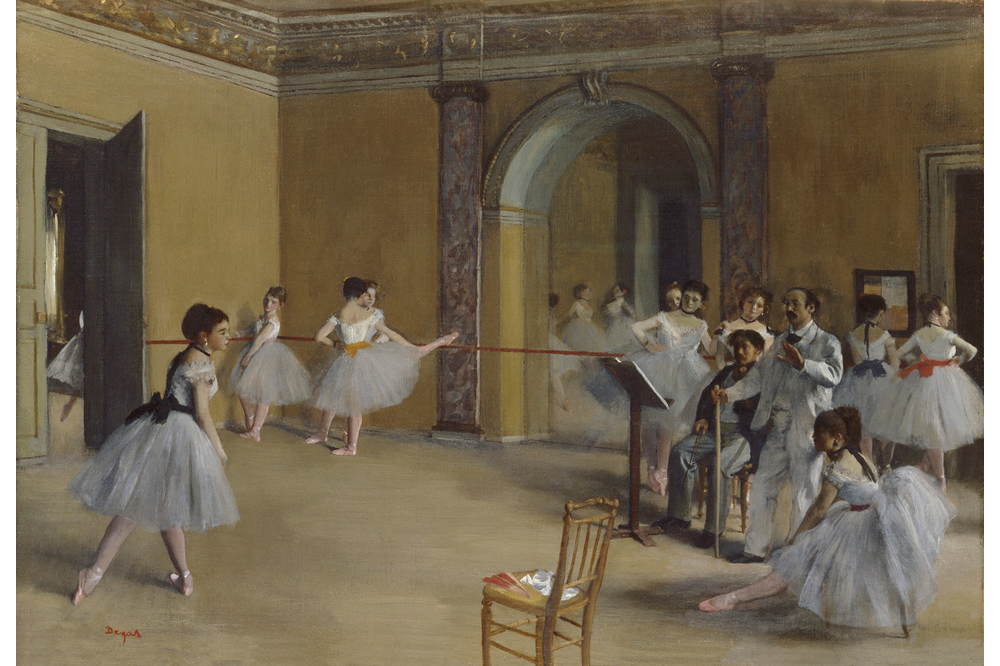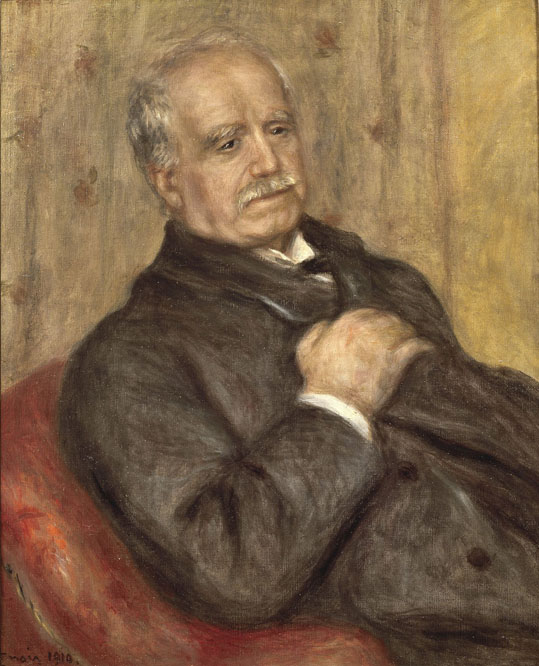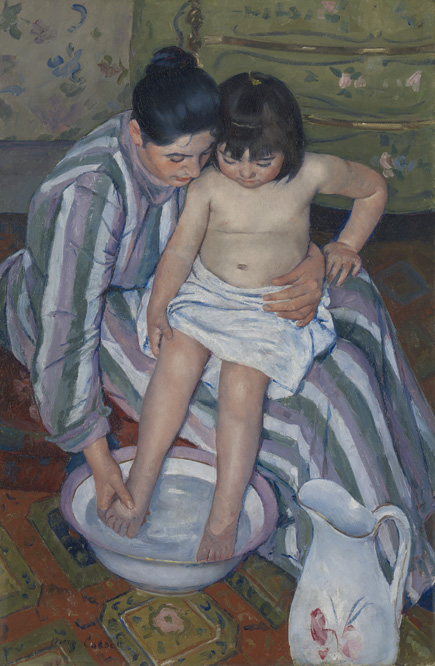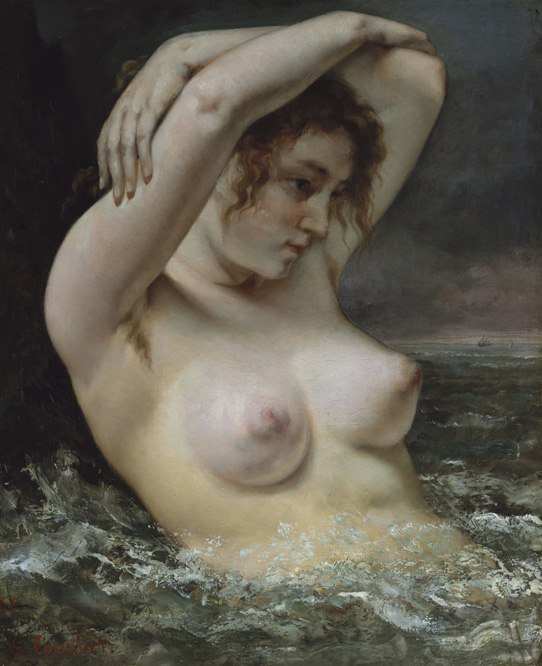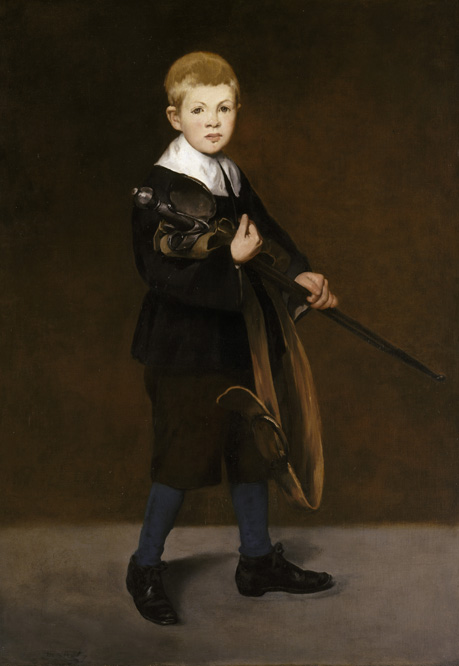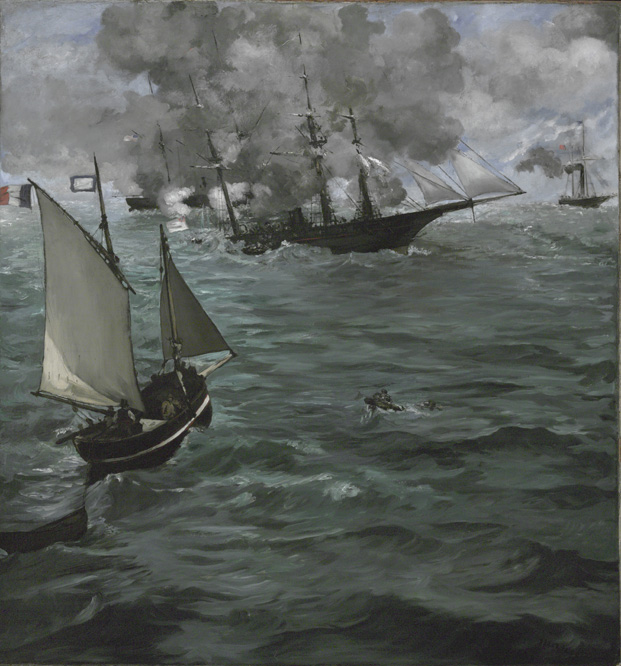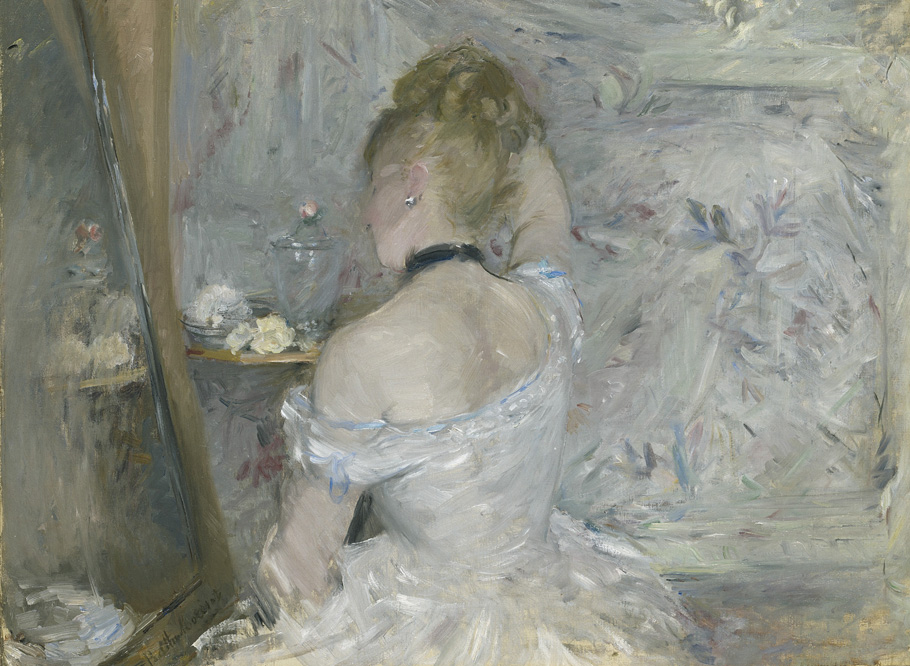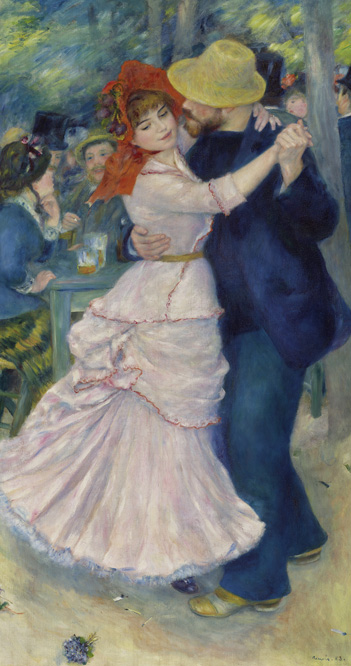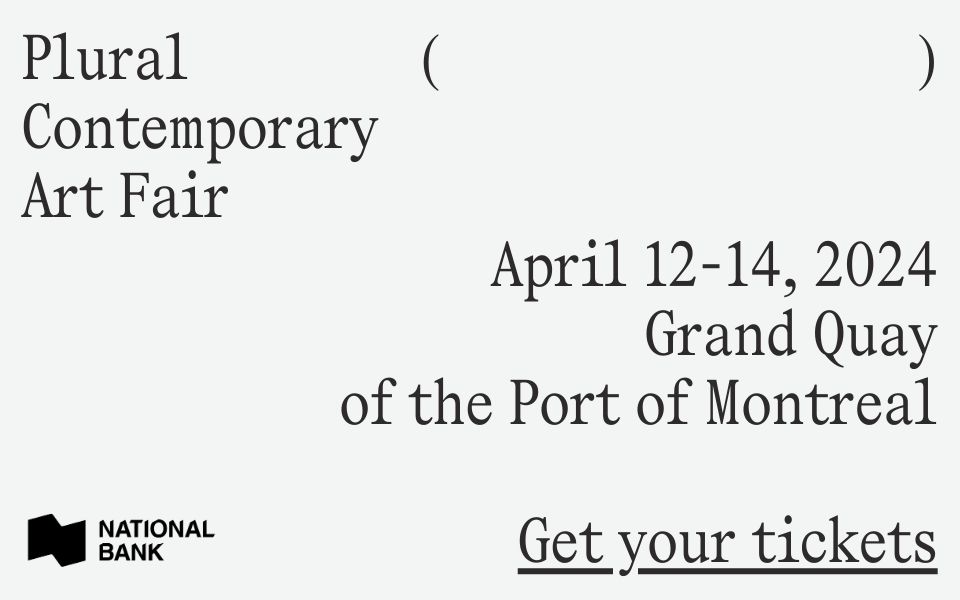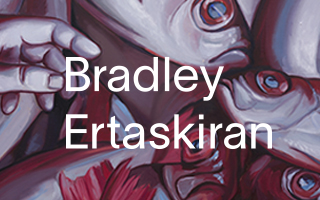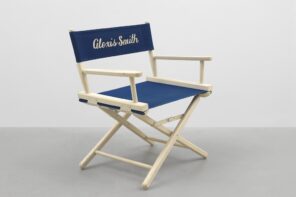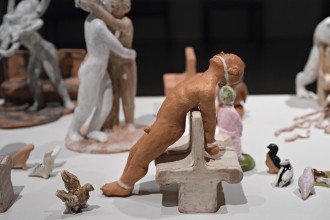Impresario, entrepreneur, gambler, and connoisseur – the French art dealer Paul Durand-Ruel (1831-1922) was all of these. He was also a force in fostering appreciation of the now beloved, but initially reviled, nineteenth-century art movement known as Impressionism. A lavishly presented exhibition, Discovering the Impressionists: Paul Durand-Ruel and the New Painting, recently concluded at the Philadelphia Museum of Art, revealed the dealer’s primary contribution as an artworld intermediary. With his finely-honed radar for The Next Big Thing, Durand-Ruel proved that advocating both commerce and aesthetic judgment needn’t conflict.
Like Janus, the two-faced Roman god of new beginnings, Durand-Ruel straddled both business and bohemian worlds. A perspicacious tastemaker, he championed a new generation of non-conformist artists when they were unknown, and, through savvy marketing tactics, made them famous. The exhibition successfully demonstrated how Durand-Ruel’s entrepreneurial tactics legitimized an art movement now enshrined in the canon of art history.
Traveling to Philadelphia from the Musée du Luxembourg in Paris and London’s National Gallery, the exhibition, which spanned forty years of art from 1865-1905, concentrated on Durand-Ruel’s role as a gallerist. As PMA director Timothy Rub put it, the dealer “made an early and daring investment in these young artists, and essentially created the modern art market in the face of bankruptcy and public ridicule.”
Although the tone of the accompanying catalogue is predominantly hagiographic, describing the dealer’s trials and setbacks in Promethean terms, the catalogue does acknowledge rivals like Theo Van Gogh (Vincent’s brother, head of the Paris branch of the prosperous Goupil gallery from 1881-90) and the dealer Georges Petit, with whom various Impressionists had dealings after their sales took off in 1888.
But Durand-Ruel was unquestionably the first to go “all in,” supporting artists of a radically different style and using his financial acumen and initiatives to persuade a reluctant public to join him. The exhibition, like a cross between a business-class case study and a masterpiece rundown, showcased varying stages of Durand-Ruel’s campaign on behalf of the Impressionists. Although a conservative monarchist in politics and a devout Catholic in religion, Durand-Ruel was a buy-low-sell-high business jockey.
As a gallerist, his manifold innovations made him, arguably, the first modern art dealer. Initially, like any ardent capitalist, he attempted to gain a monopoly on emerging artists’ work. In exchange for monthly stipends, he attained exclusive rights (or first look and refusal) to new work. Then, like a daring venture capitalist, he held out for long-term return on investment, storing his stock, which eventually reached around 5,000 works, for decades before selling.
In another shrewd move, Durand-Ruel commissioned publications for promotion, as John Zarobell’s essay in the catalogue makes clear. As early as 1873 he included prints of the newcomers’ Impressionist works in collections of images by popular artists like Camille Corot and Gustave Courbet. Ever intent on cultivating prestige, he enlisted well-known literary figures like the poet Stéphane Mallarmé to contribute essays to monographs accompanying his exhibitions.
To generate crowds and establish the newcomers’ continuity in the pantheon of art history, the dealer first organized eclectic shows in the 1870s, mixing works by the upstarts with those by established artists. Next, in the 1880s, to cement the new school’s collective identity, he switched to group shows featuring Impressionists. Durand-Ruel also pioneered the concept of solo exhibitions, which – according to co-curator Jennifer Thompson – were rare at the time, mainly occurring as retrospectives after a respected artist’s death.
Another precursor to today’s scene was his international scope. Long before a global art market emerged, with its now ubiquitous and ever-proliferating art fairs and biennials, Durand-Ruel was a tireless traveler. He partnered with colleagues in the US, England, Belgium, Germany, Austria, and Holland, lending work and cultivating collectors abroad. With frequent downturns in the French economy, this network proved a saving grace, despite its champion facing financial ruin several times over.
Durand-Ruel also used his personal collection of 370 Impressionist works to great advantage, displaying them in his Paris apartment where he entertained clients. He freely admitted visitors when museums were closed on Tuesdays, one of whom noted, “At the present time, one can only get acquainted with all these artists in this collection.” During one lunch, the American collector Duncan Phillips was so taken with the blissful scene depicted in Renoir’s Luncheon of the Boating Party, he snapped up the painting for his collection in Washington DC.
To enhance his works’ cachet, Durand-Ruel furnished his galleries in high style. The official Salon was still busily crowding thousands of works, floor to ceiling, but Durand-Ruel took pains with lighting and hanged his works at eye level. He also sold at discount to museums, to legitimize the artists’ reputations and attract new customers.
“It is startling to reconfirm today how many of the business practices he either set in place or invented are still in common use, and the degree to which the vastness of his enterprise in terms of stock and sales compares to early twenty-first-century international businesses,” co-curator Joseph Rishel says in the exhibition catalogue.
One of his practices was not so savory, although it enhanced the bottom line: inflating auction prices. At a 1901 sale of a collector’s holdings, Durand-Ruel paid top dollar for works by Sisley, Monet, and Renoir, after which he wrote the latter artist, saying, “It is essential that public sales reach big figures, whether or not the prices are fabricated. This is the only way we will achieve great success.”
In Philadelphia, the exhibition documenting Durand-Ruel’s tactics commenced with paintings that illustrated the dealer’s “Paris Beginnings.” Examples from his shows in the 1860s reflected the gentle harmonies of his stock of Barbizon paintings. Lyrical landscapes that radiate serenity by Théodore Rousseau, Jean-François Millet, and Camille Corot appeared in sharp contrast to the throbbing beat of modern urban life depicted by the nascent Impressionists, a moment later.
A gallery labeled “Discovering the Impressionists,” full of sparkling London scenes by Claude Monet and Camille Pissarro, marked the beginning of the artists’ and dealer’s collaboration. In 1870, Durand-Ruel, like Monet and Pissarro, had fled to London from the Franco-Prussian War and bloody French Commune then engulfing Paris. Another refugee, the painter Charles-François Daubigny, introduced Monet to his dealer, saying, “This artist will outdo us all.”
In a triumph for future generations, Durand-Ruel took a chance on the unknown painter, immediately acquiring two light-infused landscapes from Monet, then four equally luminous paintings from Pissarro. With the enthusiasm of a convert and chutzpah of a gambler, he set about amassing a stockpile of works by the as-yet-unnamed “new painting” school. Didactic wall texts noted that after returning to Paris in 1872 (two years before the first collective exhibition by the struggling artists that would introduce their movement), the dealer met Édouard Manet, Edgar Degas, Pierre-Auguste Renoir, Alfred Sisley, Berthe Morisot, and Mary Cassatt. He bought their works in bulk, such as his 1872 raid on Manet’s studio where he scooped up 23 canvases – some of which took twenty years to sell.
A dazzling wall with five early paintings by Manet illustrated one haul from Durand-Ruel’s buying spree. Although critics and public alike had been shocked by Manet’s innovative style, the dealer’s conviction of the art’s aesthetic value is amply justified, as seen in The Salmon (1869). This early still life is a standout with its creamy folds of white tablecloth, sparkling reflections on a goblet and wine bottle, and scaly hunk of poisson.
Yet, to understand the extent of the dealer’s daring, the exhibition should have made clear to what degree persistence was mandatory. Monetizing his cohort of rebels only came after decades of effort to “build the brand” of Impressionism. Doggedly, Durand-Ruel bucked near-universal disapproval of their novel style, giving the young painters stipends when they were in desperate need, paying off creditors, and offering encouragement when their work was derided.
As Durand-Ruel wrote in his memoir, “All my efforts were paralyzed by the violent campaign undertaken against Manet, Monet, Renoir, Sisley, Degas … and the other artists whose works I had the audacity to welcome in my gallery. Attacked and vilified by partisans of the Academy and of old doctrines, by the most authoritative art critics, the entire press, and the majority of my colleagues, they became the laughing stock of the Salon and the public.”
To the detriment of his career and personal finances, critics labeled Durand-Ruel a fool who could not be trusted to assess artistic quality. He always maintained, however, that his concern was not just to establish the economic worth of these artists but their aesthetic merit. Profit was undoubtedly his goal, but he was just as intent on being hailed a prophet.
Today, the innovations of the Impressionists have, of course, lost their power to shock. The style is now perceived as charming more than incendiary. The exhibition could have underscored how revolutionary their loose brushstrokes were by including a few examples of idealized, academic paintings, with their precise linearity as contrast.
True, the show’s supplementary didactics did term the Impressionists’ subjects and style as radical to their contemporaries’ eyes, but mostly missing was the rationale for the extreme backlash against them. Didactics merely explained that the works were deemed sketchy and unfinished (“smeared with floods of cream” one critic said). In fact, the artists were called “a bunch of lunatics and a woman” (referring to Berthe Morisot, a founding member of the Impressionists’ cooperative shows).
A key moment in the dealer/artist relationship, which must have tested Durand-Ruel’s fortitude, is exemplified by a gallery hung with works from the second group show organized by the Impressionists, hosted in 1876 by Durand-Ruel. One critic wrote of viewers who “burst out laughing” before the latest atrocities. “A frightening spectacle of human vanity so far adrift that it verges on sheer lunacy,” he wrote.
An example, which today seems conventionally pretty rather than scandalous, was Renoir’s Study: Torso, Sunlight Effect (1875-76), singled out at the time as an object of horror. His subject’s mottled skin color was described as exhibiting “the putrefaction of a corpse” with the allure of decomposing meat. Only the great patron, and an artist himself, Gustave Caillebotte, dared to buy this quintessential example of Impressionist technique, which illustrates how shimmering light affects form. (Since the wealthy Caillebotte’s works didn’t pass through Durand-Ruel’s hands, they are not shown in the exhibition, yet the omission makes sense, for his paintings were more structured than Impressionist in style.)
Another invention by Durand-Ruel was the concept of a mid-career retrospective, illustrated in Philadelphia by a sample of paintings from his 1883 monographic show of 59 works by Monet. The PMA recreation of that exhibition showed the range and evolving development of Monet’s work, spanning proto-Impressionist work in the early 1860s to his mature style of 1882. Although Monet called the solo show “my fiasco” (sales were nil), it was a brilliant promotional ploy. Critics at last began to respond to his art more favorably.
A mini-gallery with six of Monet’s fifteen paintings of poplar trees, a collection that Durand-Ruel exhibited in 1892, shines as a highlight of the exhibition. The series (its sequential nature one of Monet’s signal contributions) established Monet as a master in recording how ephemeral effects of light and atmosphere influence form and color. Whether painted under overcast or brilliantly blue skies, buffeted by wind or garlanded with golden leaves in autumn, the trees’ torch-like forms rhythmically rise, their reflections wavering in the water of the Epte River.
The series, universally lauded by critics, marked a milestone for the artist’s career. (As Monet crowed, he “did not have a scrap of Poplar left to sell.”) With the proceeds, he was able to buy his famous Giverny property, where he created the Japanese garden and lily pond to which he devoted the ambitious, near-abstract paintings of his last years.
Another high point in the PMA show was an array of paintings documenting the dealer’s foray into “New Markets in the United States.” Curators reconvened many works from the dealer’s 1886 show in New York where Durand-Ruel exhibited 289 Impressionist paintings and sold 49. The gambit – America’s first exposure to the “new painting” of the French avant-garde – marked a pivotal moment in the art’s acceptance. Monet had opposed the scheme, saying, “I confess that certain of these pictures I would regret to see sent to the land of the Yankees.” Yet again, Durand-Ruel’s commercial instincts proved valid. High-society collectors, such as Mary Cassatt’s friends, the Havemeyers and the Palmers of Chicago, purchased paintings. It became fashionable to collect them, somewhat like the vogue for contemporary art among today’s hedge-fund runners and nouveau-riche.
“Without America, I would have been lost, ruined, after having bought so many Monets and Renoirs,” Durand-Ruel said in an interview given to the painter Royal Cortissoz (published in Personalities in Art, 1925). Referring to survey shows held in New York, Durand-Ruel told his interviewer, “The two exhibitions there in 1886 saved me.”
The PMA show reached a crescendo of sorts in a large gallery devoted to an abridged rehang of a triumphal 1905 retrospective in London that featured 315 paintings (196 from Durand-Ruel’s own collection), memorializing the largest exhibition of the movement ever. In that survey of works by Sisley, Pissarro, Morisot, Cassatt, and Degas, in addition to Manet, Monet, and Renoir, the confident style and mastery of these artists was on full display as the most advanced art of their generation, expressing the truth of their modern moment.
In hindsight, the impact of this businessman’s resolve is clear. When Durand-Ruel was strategizing exhibitions in the early 1870s, the market for work by living painters was almost non-existent, a deficiency he aimed to reverse. In 1885, Renoir acknowledged Durand-Ruel’s success when he wrote that his friend and dealer’s “true quality” was his “love of art and defense of living artists. In the future this will be your glory.” Two years after Durand-Ruel’s death in 1922, Monet also paid him tribute, telling Marc Elder (who interviewed him at Giverny), “We would have died of hunger without Durand-Ruel, all we Impressionists. We owe him everything.”
Unyielding in advocacy for his beloved artists, towards the end of his life when his obstinacy was rewarded by art lovers and collectors, Durand-Ruel himself declared, “Finally the Impressionist masters have triumphed.” He added, “My madness was my wisdom.”

